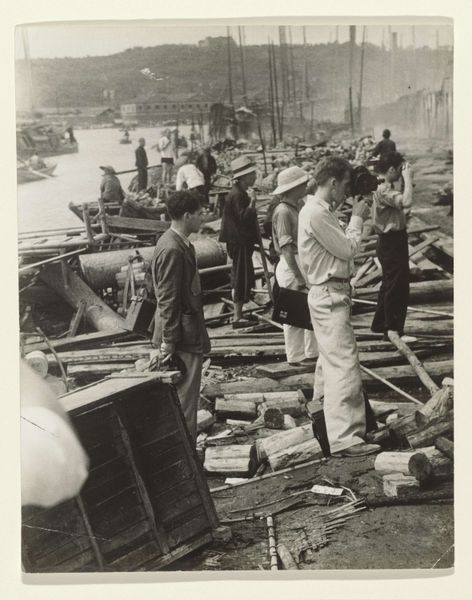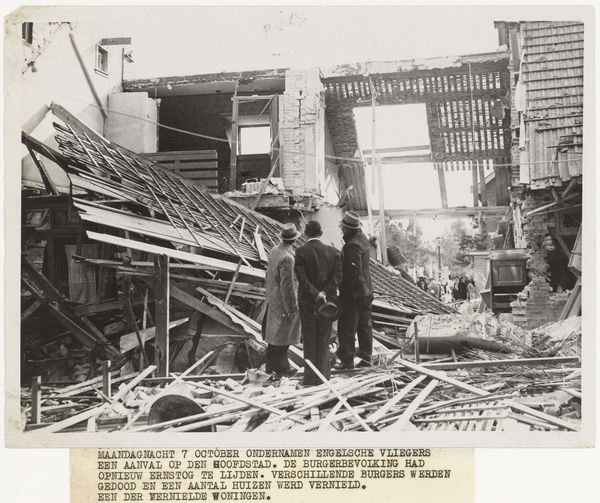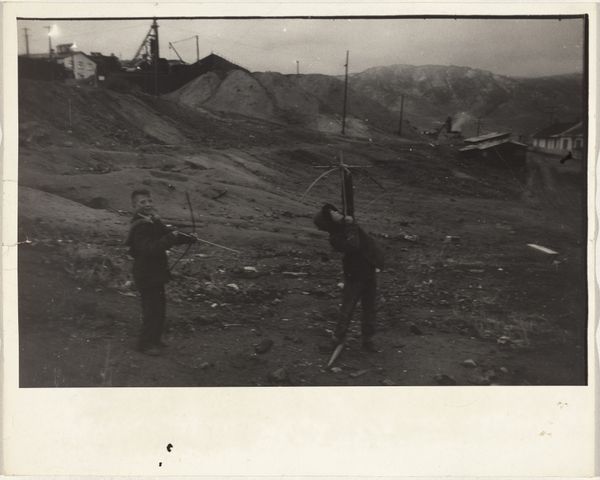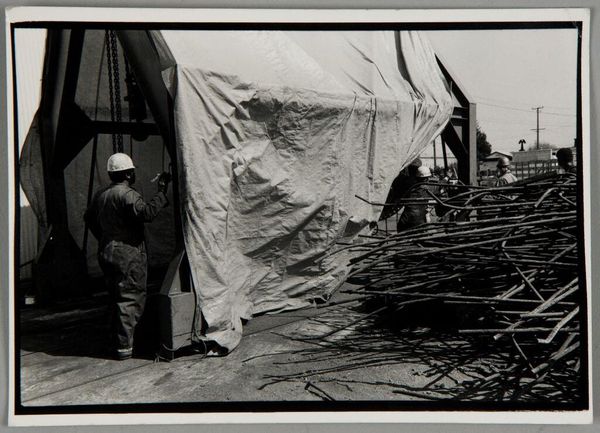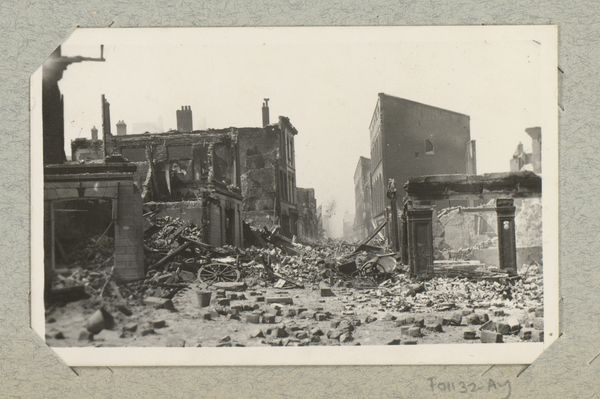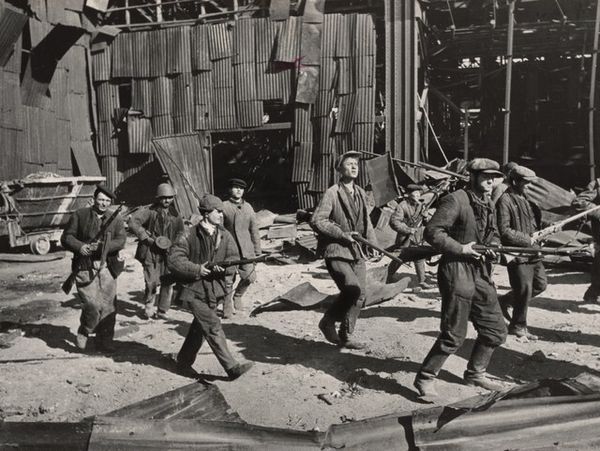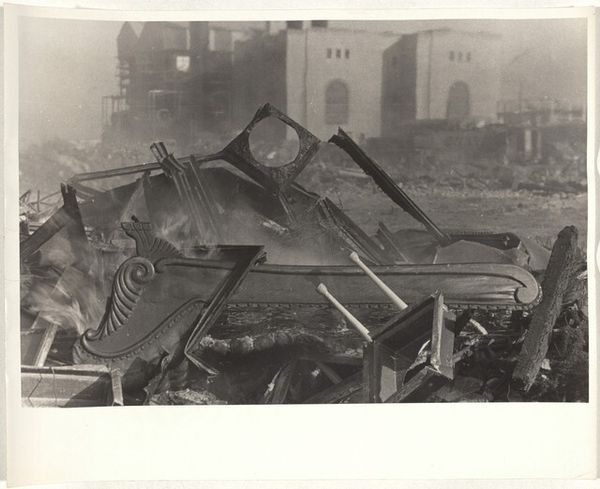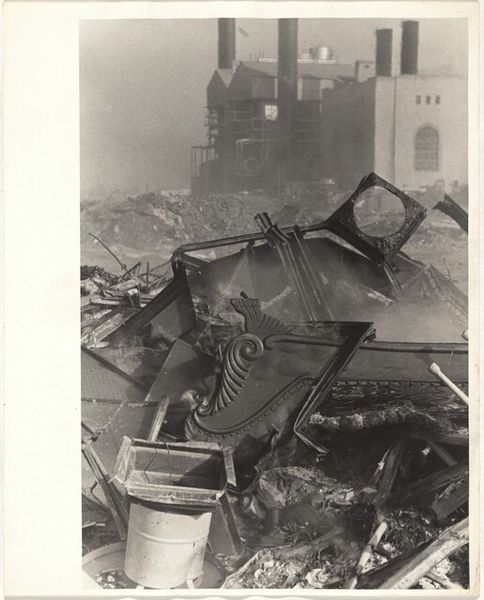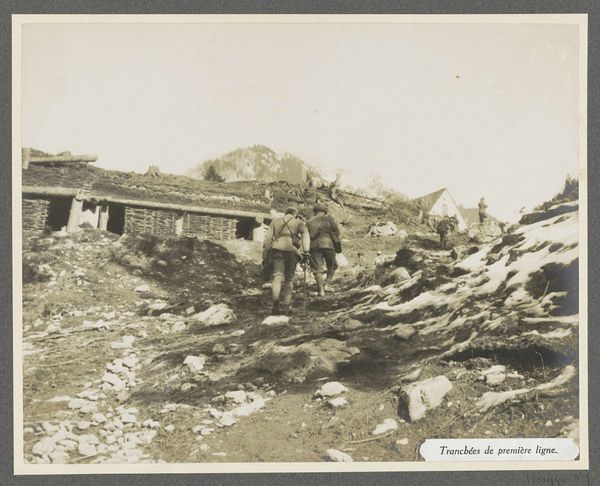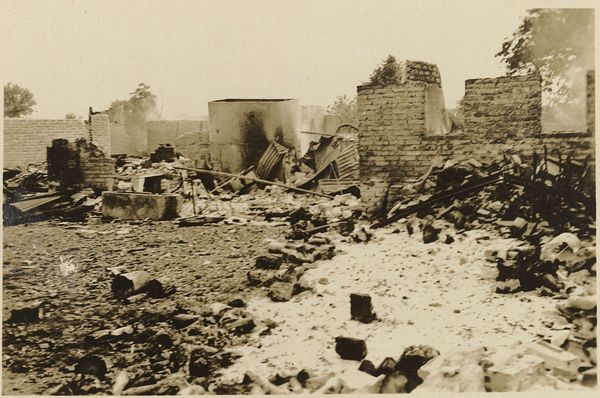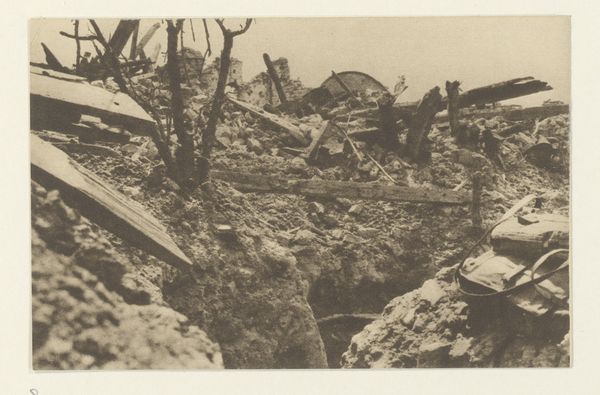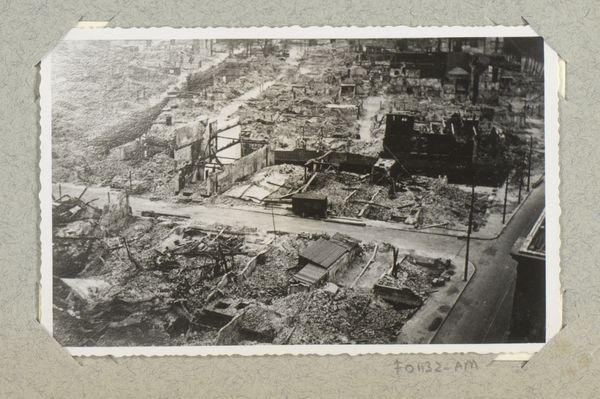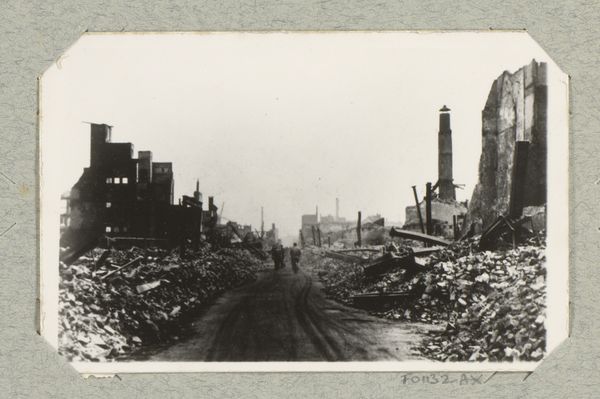
Voormalig bewoonster zoekt naar bruikbare eigendommen in haar oude, volledig verwoeste huis 1948
0:00
0:00
Dimensions: width 17 cm, height 12 cm
Copyright: Rijks Museum: Open Domain
Curator: This photograph by Charles Breijer, taken in 1948, is entitled "Voormalig bewoonster zoekt naar bruikbare eigendommen in haar oude, volledig verwoeste huis"—"Former resident searches for usable belongings in her old, completely destroyed house." It's currently housed in the Rijksmuseum. Editor: The starkness is what immediately grabs me. The high contrast of the gelatin-silver print only emphasizes the chaotic composition of debris, offset by the seemingly unaffected people carefully sifting through the rubble. Curator: Note the use of line throughout the wreckage—jagged edges and fractured beams that converge and diverge, creating a network of visual pathways. Consider how the lines guide the viewer’s eye to the figures at the photo's center. Editor: Absolutely, and situating it in its historical moment, just after WWII, Breijer powerfully captures the personal impact of massive geopolitical conflict, making it explicitly gendered by the composition; we see a woman in the foreground and a man, secondary, in the background. It's about survival, resilience, and specifically women in post-war society searching through their former home in a defeated nation. Curator: The textures—rough stone, splintered wood, the smooth sheen of the woman’s coat—add a tactile dimension, reinforcing the reality of destruction and its aftermath. Also, the balance of light and shadow is exquisitely executed; dark pockets suggesting loss, yet patches of light hint at hope and persistence. Editor: It's that contrast of shadow and light which feels crucial. You mentioned ‘balance’ and I wonder if a kind of compositional tension is being created in direct contrast to its subject matter? It draws a fine line in how suffering is displayed; its historical function could be about promoting an image of hope. However, it also could become a stark indictment against those very things. It begs to be viewed critically by its audience. Curator: Interesting; viewing the piece through these oppositions makes it even richer, both in what we see on the surface and what it implicitly suggests, which has, evidently, survived its context to linger today. Editor: Yes, there’s a complex set of power dynamics and possible counter narratives here. Perhaps those ambiguities will spark debate long into the future about not only its history, but its legacy too.
Comments
No comments
Be the first to comment and join the conversation on the ultimate creative platform.
